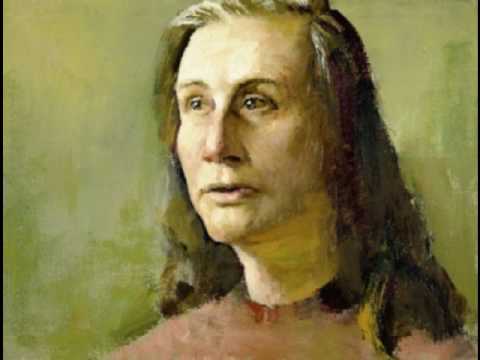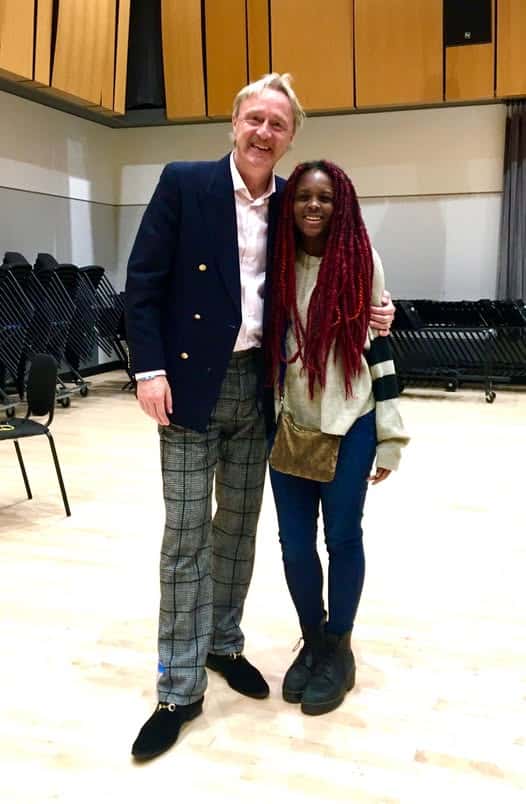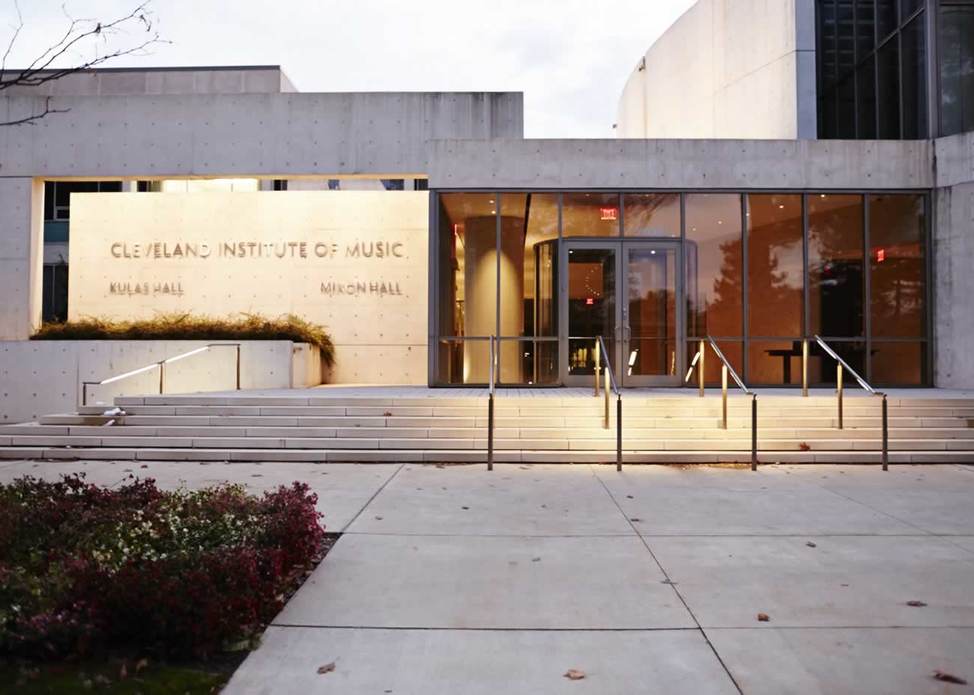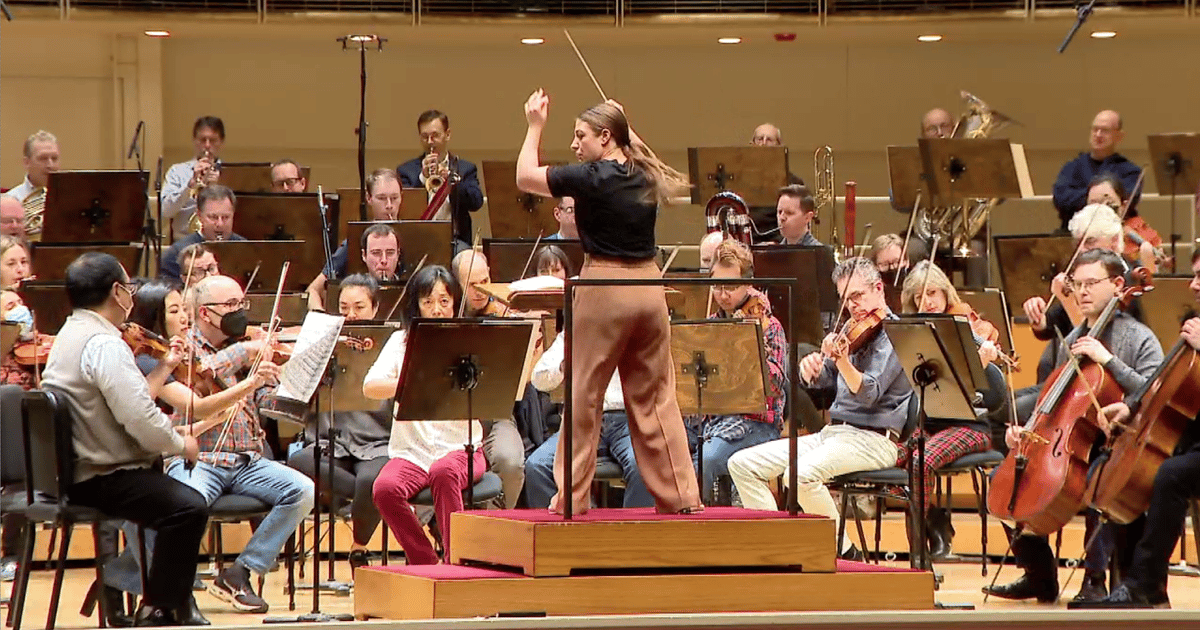Which small-scale works should your orchestra perform?
mainOver the next year or two, Mahler, Bruckner, Shostakovich, much of Sibelius and the rest of the big-band composers will be strictly off-limits as the world adjusts to Covid and post-Covid limitations.
Symphony orchestras are starting to plan small and spaced-out, but they have no confidence in what miniatures (post-Mozart) the public might want to hear.
These are some of the items on my wishlist. Please add your own.
Alfred Schnittke (pic), Concerto grosso
Kurt Weill, Quodlibet
Vaughan Williams, Tallis Fantasia
Prokofiev, Classical Symphony
Theodorakis, Oedipus Tyrannus
Hartmann, Concerto funèbre
Hindemith, Konzertmusik
Maxwell Davies concertos
Darius Milhaud chamber symphonies
Morton Feldman, Madame Press Died Last Week aged 90
Bohuslav Martinu, 2nd nonet
Nino Rota, nonetto
Malcolm Arnold, guitar concerto.

Your turn.





Darius Milhaud… La Creation du Monde
Schoenberg…. Verklärte Nacht
Webern …………….String Quartets
Strauss Metamorphosen
Bartok Divertimento
Mahler Das Lied der Erde arr Schoenberg
there is no shortage of great music for smaller size orchestras…
Enescu Octet
Enescu dectet for strings and chamber symphony also
Elgar : Serenade , and Intro and Allegro
Dvorak : Serenade Op 44
Mozart : arrangements of several Piano Concerti as Quintets
Brahms : Symphonies arranged for 2 pianos
For situations where a reduced orchestration of a larger work might be appropriate, there are quite a few options here: http://www.smallorch.com
Milhaud La Création du Monde; Ives Set for Theater Orchestra; Ragtime Dances
Création du Monde is fun, but you need a sax player, which for many orchestras means hiring an extra player. I can see management wanting to avoid that extra expenditure.
I have always rather liked Satie’s Musique d’ameublement: tenture de cabinet préfectoral
Weinberg chamber symphony
oh, yes!!!
There are four of those. I’d take any of them, plus the two Sinfoniettas. Also those of his “official” symphonies (2, 7 & 10) that were written for string orchestra.
Fanny Hensel Mendelssohn’s music that was written to her own Salon -orchestra and choir: Festspiel, Lobgesang, Hiob, Oratorium. Can be managed by less players than Prokofiev’s Classical Symphony.
Also – Copland Appalachian for 13 players (original version).
Falla…El Sombrero and El Amor Brujo have excellent chamber versions,
El retablo de maese Pedro is chamber opera.
Barber… A Hand of Bridge ….chamber opera.
Martinu… Tre Ricecare…(best of many marvellous small orchestral noises!)
Chopin…both Concertos in quintet version.
Roslavets’ chamber symphony
Stravinsky immediately comes to mind. So many works: Concertino, Octet, Septet, Ebony Concerto, the Suites, “Dumbarton Oaks,” etc.
There’s a lot of Gershwin you can do with a jazz band — as it was originally done — including Rhapsody in Blue.
Also a bunch of Martinu: Concertino, Sinfonietta Giocosa, Toccata e Due Canzoni, etc.
Weill: The Seven Deadly Sins
Shostakovich/Barshai: Chamber Symphonies
Messiaen: Des Canyons Aux Étoiles
There’s also a ton of music for two piano, such as Rachmaninoff’s Symphonic Dances, Rite of Spring, Hungarian Dances, Slavonic Dances, Ma Mère l’Oye, Rapsodie Espagnole. And for some real fun are Grainger’s pieces for two and three pianos.
Canyons couldn’t really be done properly under current conditions, I would think. But Concert à quatre could.
Vagn Holmboe’s three chamber symphonies and Kairos for strings
This is a great compilation of mostly underplayed music. But one can also add a whole period to it: just about all Baroque and Renaissance music could be played by historically informed ensembles. Opera and large oratorios may be more difficult, but everything else is ready to go.
It’s time for a Stravinsky revival. Stravinsky composed lots of music for small chamber groups or chamber orchestra (such as Ragtime, L’Histoire du Soldat, Octet, Concertino, Tango, Ebony Concerto, Dances Concertantes, Four Norwegian Moods), and even his works for piano and orchestra (2) as well as the Violin Concerto do not demand big orchestras.
Yes, but Soldat is done constantly! But not the masterful Ebony Concerto, or Orpheus.
All of you are just out of your minds:
1) The audience base will already be reduced,
2) you seriously think that the reduced audience base will be modern music aficionados,
3) willing and able to pay a premium in addition (to make up precisely for the reduced audience base),
4) to hear these pieces you recommend??
No, the future in concert hall programming will mirror exactly the programming on radio stations: Classic lite.
Individuals movements from baroque and classical periods for smaller ensembles. Most likely involving a harp.
Count on it.
Well, yes. However:
(a) It’s worth considering the possibility that audiences — the ones who actually like music and live performances — might be so ready to come back to the concert hall that they will risk a program with one non-Baroque piece on it.
(b) There’s plenty of non-Baroque “comfort food” music written or arranged for chamber ensemble that would not scare audiences away. People would presumably not run from the Barber Adagio or the 13-instrument version of Appalachian Spring, for example; or a concert of Bach & Vivaldi could have a piece by Holmboe on it. It wouldn’t necessarily be box-office suicide.
(c) Managements are probably savvy enough to understand (since most of them will also have been unpaid during the shutdown) that they won’t be able to charge extra for tickets.
(d) People posting here are playing the “in an ideal world, what music would you like to see programmed” game, not the “let’s strategically plan a realistic season for maximum audience attendance/ fundraising potential with minimum expenditure” game. It makes people feel better. You don’t have to be so down on it.*
*When my brother ended up in a wheelchair about 10 years ago, he passed some of his very slow recovery time by “planning” a trip to the 2010 world cup in South Africa: renting a handicap van, driving from city to city, looking into ticket availability and so forth. My mother kept telling him he was crazy to be thinking about such a thing, he was never going to travel anywhere, etc. etc. Finally he had to say “I know, Mom — it just helps to have something hopeful to think about.” She at least only grumbled behind his back after that. (P.S. Of course he never went to South Africa.)
I understand where you’re coming from, but I disagree.
All of your conclusions are obvious and predictable, and for that very reason they aren’t going to happen.
This pandemic has shuffled the deck, and perhaps put the jokers back in.
The same audiences won’t be back for a while, if ever. But the people who do risk the return to concert halls will have a new fervor and thirst for the experience of communing with musicians over great music.
If orchestras are going to survive, they will have to find that connection that the returning audiences crave, and play to them with a new intimacy that transcends the same-ol’, same-ol’ routine of showing up and playing what the artistic committee thinks will bring people in.
In the late classical and early romantic periods most orchestras had 40 or so players, tops, playing in theaters that sat 400 people. Haydn’s first orchestra at Esterhazy didn’t play public concerts, but he had a string section of 3 first violins, 3 seconds, 1 viola, 1 cello and 1 bass. He did OK.
I think that most “Classic Lite” radio stations are struggling, because they think their mission is to provide innocuous background noise. Our local station seems to think that frequent programming of works for guitar, harp or recorder is the key to satisfying audiences. It’s not, and I don’t listen anymore. WFMT out of Chicago doesn’t compromise on its programming, and it seems to be doing all right.
In the end, it’s a matter of basic accounting: you can program whatever you want, just as long as you can sell enough tickets and attract enough donations to pay for it. It’s entirely possible that a new era of bold, adventuresome programming is ahead of us, played by smaller ensembles.
The Great Extinction event 66 million years ago wiped out the dinosaurs, but it enabled small mammals to grow and prosper. It’ll be interesting to see what happens in the next few years.
Another vote for Milhaud’s small symphonies. A vote for Mozart’s Epistle Sonatas (these are so charming), the wind pieces of Richard Strauss (Suite, both of the pieces “From the workshop…”)
Honegger – Pastorale d’été and Symphony No.2; Roussel – Petit Concert; Grainger – Scotch Strathspey and Reel (what a fun, rollicking piece!).
And don’t forget Hamilton Harty’s pieces.
Forget that. Go big or go home. We’re either coming back or we are not. No half-measures. I’ll be in the audience, guaranteed.
So many to name and so many that never get done by the Big Orchestras.
This is an opportunity to explore new and familiar works by great composers and to refresh the repertoire and challenge the musicians with new materials.
…oh, and two other gorgeous works: Wagner – Siegfried Idyll; and Ravel – Pavane pour une Infante défunte.
Percy Grainger
Haydn Symphony No 83.
Mozart Symphony No 41.
Mendelssohn Symphony No 4
Medtner Piano Concerto No 3.
Previn Piano Concerto.
Medtner 3, small? 2222 – 4231 – pn – strings.
Not small.
All this is great music, music I would love to hear, and it’s all deserving of performance. But we are the music buffs. This isn’t the stuff that actually gets actioned for the most part, and whatever does manage to get played by smaller high level groups, it’s not going to help for the regionals and many of the bigger players. That’s just not what the system is set up to provide – and we’ve been telling people for years that they need to be there in person to experience “YOUR Orchestra” (so sick btw of that too widely-used construction)… There’s a reason that warhorses are overplayed. People largely come to hear what they know. Good luck turning that aircraft carrier around this late in the game.
One place to look would be more or less the entire repertoire commissioned by Paul Sacher for his chamber orchestra, and that will include major composers and works. Gather up the last few decades of the seasons programmed by the chamber orchestras in St Paul and Los Angeles. It isn’t all endless Four Seasons.
There is of course just about the entire Baroque, Classical, and early Romantic literature. All those symphonies and concertos the boy Mendelssohn wrote for the “house orchestra” (well, you know, bankers have big houses). The Schubert, Mendelssohn other than No. 2 and even the Schumann symphonies sound just fine with smaller string sections. Brahms, Dvorak and beyond, not so much but selected works might be OK. I played the Dvorak No. 8 and Vaughn Williams Symphony No 2 and 5 in fairly small orchestras.
There are plenty of small-orchestra pieces that even the most uncurious and conservative audience member would (and does) enjoy: the Dvorak Serenade for strings and ditto for winds, the two Brahms Serenades, Tchaikovsky’s Serenade for strings and, perhaps, Mozartiana Suite. The various popular works for strings by Vaughn Williams, Holst, Britten come to mind.
Almost all the popular ballets, including Tchaikovsky, exist in versions for smaller orchestra (even Stravinsky contributed to that effort with the Sleeping Beauty Bluebird Pas de Deux). And just about every popular pot boiler overture you can name exists in a version for “theater orchestra.”
The Sacher repertoire, indeed! Someone already listed Bartok’s Divertimento, so let me put in a vote for his Music for Strings, Percussion and Celesta.
Martin Petite Symphonie Concertante, Ballade for Viola;
Glanville-Hicks, including Concertino Antico for harp and strings.
I think the SPCO repertoire would be disappointing. Even under Davies, they kept repeating The Lark Ascending, and Strauss’s Bourgeouis Gentilhomme Suite.
“Over the next year or two, Mahler, Bruckner, Shostakovich, much of Sibelius and the rest of the big-band composers will be strictly off-limits ”
Utterly absurd. Any orchestra caving in to Covid panic, mask-Nazis, and “social distancing” tyranny in their setups is undeserving of support. I’ll stick to CDs and Idagio. Orchestras were nice while we had them, but add them to the list of good things the world can no longer have, and frankly no longer deserves.
Thanks for that Dennis!
Siegfried Idyll
Respighi “The Birds — Gli Uccelli”
Respighi Three suites of “Antique Airs & Dances”
Rihard Strauss Metamorphosen for 23 solo strings
Lekeu Adagio pour cordes d’orchestre
Haydn Symphony 22 strings/2 horns/2 Eng. horns
Haydn Sympphony 31 “Hornsignal”
Dvorak “IIn Nature’s Realm”
Sibelius Pelleas and Melisande Suite
Chausson Poeme for Violin, orchestra
Shostakovich Symphony 14, strings/baritone/mezzo
Tchaikovsky Serenade in C; Mozartiana
Mozart Adagio & Fugue C minor; Fantasia & Fugue F minor, arr. strings
Shostakovich First piano concerto trumpet strings
Grieg Holbrg Suite,; “Vaaren –The Last Spring”
Rchmaninoff Vocalise arr. strings
Schubert Adagio & Rondo Concertante, pf., strings
Stravinsky “Four Norwegian Moods”, Histoire du Soldat
Beethoven Cavatina, Grosse Fuge for strings
Brahms two Serenades, the second without violins
Mahler Adagietto
Vaughan Williams “The Lark Ascending”, “Tallis Fantasia”
Schubert Rosamunde Overture and dance suite
Overtures by Cherubini, Gluck, Etienne Mehul, Andre Gretry suites
Beethoven Music for a Ritterbllet
Mozart “Masonic Funeral Music”
Wagner Siegfried Idyll
Rihard Strauss Dance Suite after Couperin
Sibelius “En Saga” Op. 9, if the orchestration isn’t too large
I’ll think of more as soon as I send this.
If including opera (as the NY Phil and others will often program an operatic or musical theatre work) –
Dominick Argento – Postcard from Morocco
• Wolf-Ferrari, “Il Segreto di Susanna”
• Menotti, “The Telephone” (actually a lot of Menotti has a small cast, e.g. “The Medium”)
• Poulenc, “La Voix Humaine” (does it count as an opera if it has only one character?)
Constant Lambert made a chamber orchestra version of Vaughan Williams’ grandly-scored masterpiece “Job” for an ensemble that could more easily fit into an orchestra pit. With one or two very minor adjustments to bolster the bass line, it works very well.
Five Variants of Dive and Lazarus
The concert opener has to be Malcolm Arnold’s A Grand, Grand Overture, because this list just SU……
Joachim Raff: Sinfonietta (10 winds), String Octet
George Chadwick: music from Tabasco
Glazunov: Theme and Variations for Strings
Lots of great ideas already. A few more:
Frank Martin: Polyptique and Petite symphonie concertante
Wellesz: Octet
Mozart: Gran partita and the chamber versions of piano concertos K415 etc
Janacek: Youth Stravinsky: Octet (and plenty more as already noted above)
Ravel: Intro and allegro
Debussy: Dances (harp and strings)
Hindemith: the Kammermusik series, Trauermusik
Brahms: Serenade no.2
“Over the next year or two, Mahler, Bruckner, Shostakovich, much of Sibelius and the rest of the big-band composers will be strictly off-limits ”
That’s utterly absurd. Nobody knows that. Epidemics run their course and then go away (the plague in late Antiquity and the Middle Ages came and went, without any treatment or vaccine). Covid will maybe disappear rather quickly, or we’ll have the dreaded second wave, nobody has a clue, but I doubt very much that social distancing will be tenable for a long period.
This systematic pessimism is becoming annoying and it’s not much smarter than Trump’s or Bolsonaro’s fallacies.
As for works for smaller ensembles, Haydn’s 104 symphonies have my vote. They’re gems, quite a lot are barely played, and, when an orchestra has played them all, it can do it all over again, there’s enough music there to keep the audience entertained. And you can add CPE Bach.
I have to largely agree. However, epidemics disappeared in the past when enough people had contracted the virus to confer herd immunity on the community. There is a good chance this may happen sometime in the early Autumn in the worst hit areas.
For sure, we can’t stay in lockdown long-term. I suspect concerts will begin again by the Autumn. At first, I guess some people will be too afraid to attend, others will be desperate to go to a concert and contemptuous of the risks. Most of us will be a bit nervous as things return slowly towards normality.
But if concerts restart, it won’t be long before these large pieces are played. There really is little point in reducing the size of the orchestra if the hall has several thousand people in it (most of the risks are in the audience rather than on stage).
Martinu: Double Concerto for Two String Orchestras, Piano, and Timpani (might be too crowded); Stravinsky: L’Histoire du Soldat; Chausson: Concert for Violin, Piano, and String Quartet; Debussy: Prelude a l’apres–midi d’un faune (Benno Sachs transcription); Schoenberg: Suite for 2 Clarinets, Bass Clarinet, Violin, Viola, Cello, and Piano
Dvorak’s “In Nature’s Realm” — German title “Aus der Natur” –12 minutes, overture or short tone-poem. Frederick Stock famously recorded it with the Chicago Symphony. There must be a slew of Czech versions
Jacques Ibert “Escales — Ports of Call” once quite popular on the Franco American circuit.
Greetry – Cephale et Procris, arr. Felix
Andre Gretry – Zemire et Azor” ballet suite, utterly enchanting from Beecham
Choral: Schubert’s part-songs for male choir, many with guitar accompaniment; some with piano, including the exquisite “Nachthelle with very high tenor olo; and one “Nachtgesang im Walde” with four French horns. There’s also a Brukner male choir piece with horns, and two women yodelers!
Brahms’s Op. 17 songs for women, two horns, and harp
Humperdinck – Dream Pantomime and overture from “Hansel und Gretel” Humperdinck wrote the concert ending to Siegfried’s Rhine Journey for Wagner, used by Toscanini and others. Mottl – another CSO classic/Desire Defauw.
If Luigi Nono had arranged a 9 player suite from the musical “No, no, Nanette”, it would be the Nono “No, no Nanette” nonet.
I’d vote for yours as the most inventive post in a nanosecond.
And i’d second your Nono nano vote!
I really wish that I knew what the musical landscape might look like in 12 months time. I will make a couple of suggestions, repertoire-wise below.
However, obviously, we can all speculate about what might happen, in the same way as the UK press did in relation to Boris’s announcement last Sunday.
If the PM was in the slightest bit interested in the arts, and decided to make some grand pronouncements, just think what might happen:-
1. All orchestras can perform the Turangalila, Resurrection, Leningrad and Pathetique symphonies over-and-over again but only in an open, public space, in groups of two;
2. Audiences should try and stay at home but can go to concerts if they can’t listen to concerts from home, or not;
3. You can go to concerts anywhere in the country but should try and go to local concerts, unless you want to travel a long way but, if you do travel a long way, you need to be back by bedtime (obviously you can’t go to the Usher Hall, the Waterfront Hall or St David’s Hall – other halls in Wales, Scotland and Northern Ireland are not available too);
4. Single musicians can come into your home as long as social-distancing is observed, they wear a mask and apply hand sanitiser to the keyboard, if they use the piano (however, if the musician is a member of your family from another household, they can’t even come into your garden, as there is always the chance that they will want to use you toilet);
5. If, while you are out and about, you happen upon a piano duet that you know, you need to choose to listen to either the primo or secondo player, but not both together;
Slightly more seriously, here are five pieces I’d like to put forward:-
Honegger: Symphony No.4
Lambert: Piano Concerto (for soloist and 9 players)
Torke: Adjustable Wrench
Gounod: Petite Symphonie
Ibert: Divertissement
Much more seriously, this whole situation does offer the arts the opportunity for a complete reappraisal – always a good thing from time-to-time.
Dramead, – via cyclone – piece for 5 bongos.
Barber: Knoxville, Summer of 1915 (you’d think it would be a popular piece, but my orchestra has only played it once in the last 30 years)
Other than that, anything I’d thought of has already been suggested.
Berlioz, Les Nuits d’Été for chamber ensemble. The lovely Jan deGaetani recording also has a chamber version of Mahler’s Ruckert Lieder…
What? No mention of Villa-Lobos?
Haydn, Mozart, Beethoven, and Schubert will still be around, but will there ever be a point to having a Bayreuth Festspiele again? And no more Mahler and Berlioz for a while…
Sadly the obvious answer is more choral music but for the moment that seems even more dangerous unless you can space the performers around the hall. If choral music ever comes back I suspect we’ll get a lot more Monteverdi, Purcell, Handel whose music can fill a night and guarantee a sublime experience the way Mahler and Wagner do, but I’d love to see more a cappella concerts of motets and madrigals.
For opera we’ll start getting many more musicals in the houses since they require smaller orchestras: Rogers and Hammerstein, Sondheim, Porter, Berlin, Kern, and especially the Gershwins.
And we’ll certainly get a lot more mining of much earlier instrumental music: Vivaldi, Telemann, Praetorius, Corelli, Rameau, Lully….
Any list has to include plenty of works by ‘music factories’: Hindemith, Saint-Saens, Liszt, Martinu, Milhaud, Glass, Cowell, Villa Lobos, Koechlin, Toch, Wellesz, Schnittke, Rautavaara, Hovhanness, Ornstein, Weinberg, etc…
But the economics of what comes next are so unknown, can there even be a concert scene as we even remotely understand it today? How can we possibly even guess what comes next?
Perhaps Cage’s 4’33’ could be arranged for a small ensemble if indeed it has not already been done.
You mention two nonets, but there are lots of others, including of course the Spohr, and the superb ones by Lachner, Farrenc, Czerny, Rheinberger, Stanford, and Trojan, and the nonet version of the Brahms First Serenade. But there are also chamber orchestra classics, like Appalachian Spring, Barber’s Knoxville, and of course the Ives Third Symphony. And surely the two Schoenberg chamber symphonies.
Well Three penny music and City of Mahagoney
Salzedo Concerto for Harp and Seven winds, Autumn Concertino for Harp, Strings and Percussion by Virgil Thomson.
Poulenc Sinfonietta. Since social distancing may preclude the customary sharing of a music stand by string players, more orchestras may transition to reading parts from an IPad or similar.
The Milhaud octet — the 14th and 15th string quartets played simultaneously!
Britten: Les Illuminations
Bloch: Concerto Grosso No. 1
Saariaho: Nymphea Reflection
Salieri: Sinfonia Veneziana
Haas: Studie for String Orchestra
Wiren: Serenade
A mixed & off-beat bag of works; but I say “Yes” to String
Orchestra repertoire…
Barber’s Adagio for Strings
Finzi works Dies Natalis and Ecologue for Piano & Strings
Poulenc’s G minor Concerto for Organ, timpani & strings
Hermann’s “Psycho” Suite
Mozart Piano Concerti 12/13/14 w/string orch accomp.
Arensky’s Variations on a Tchaikovsky Theme
Diamond’s Rounds for String Orchestra
Ulysses Kay’s Six Dances for String Orchestra
and a quirky favorite: Bowles’ Suite for Small Orchestra
As a flute player, I would love to see more strings-only repertoire on orchestra concerts 😉
Haydn Symphonies arranged for five players by Salomon.
Hows about peter Schikele’s ‘Quodlibet,’ Norman?
Casella Serenade
Beethoven prmiered his “Eroica” privately with 28 players. “Ensemble 28” recorded it that way. It works, especially the glorious horn trio in the scherzo.
Nobody mentioned Hindemith’s Kammermusik…. ??
No, they did not.